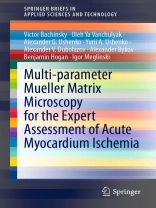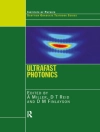This book provides an essential overview of the basic principles of imaging modalities, accompanied by examples of their applications in modern clinical and associated pre-clinical studies. The monograph is based on the original results of investigation of the efficiency use of laser light and Mueller-matrix polarimetry approach for assessment of myocardial tissues towards confirmation the cause of death. A morphological analysis of necrotic changes in the myocardial tissue of patients that died due to heart attack, coronary heart disease and acute coronary insufficiency was carried out and the data and histological sections of the myocardium inspected utilizing Mueller-matrix mapping of tissue samples with polarized light. A unified optical model of polycrystalline structure of the myocardium is proposed, and the principles and regulations of Mueller-matrix description of its polarization manifestations are explored and developed. The book also provides a statistical and scale-selective wavelet analysis of polarization and Mueller-matrix maps. Finally, the key forensic medical criteria for the differential diagnosis of the cause of death due to necrotic and pathological changes in the morphological structure of the myocardium have been established
Tabela de Conteúdo
Introduction.- Intrinsic Multi-modal Optical Imaging.- Extrinsic Optical Imaging.- Main achievements of the brain optical imaging in neuroscience and perspectives of its further development for various applications in clinical and biomedical studies.- Summary and Conclusions.
Sobre o autor
Professor Igor Meglinski, MSc, Ph D, is a Head of Opto-Electronics and Measurement Techniques Laboratory in the University of Oulu (Finland). For the last 20 years, his research interests lie at the interface between physics, optical and biomedical engineering, sensor technologies and life sciences, focusing on the development of new non-invasive imaging/diagnostic techniques and their application in medicine & biology, material sciences, pharmacy, food, environmental monitoring, and health care industries. He is the Node Leader in Biophotonics4Life Worldwide Consortium (BP4L), Fellow of the Institute of Physics (UK), and Fellow of SPIE. Professor Meglinski is the author and co-author of over 220 papers in peer-reviewed scientific journals, proceedings of international conferences, books, book chapters, patents and professional magazines; over 450 presentations at major international conferences, symposia and workshops, including over 200 invited lectures and plenary talks. Professor Meglinski is highly regarded for his research in Biophotonics and sensor technologies and their wide range of uses in practical applications.












